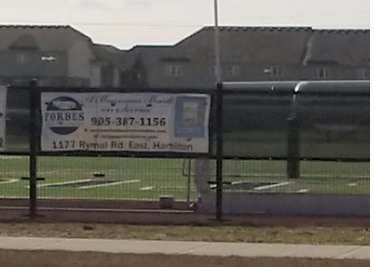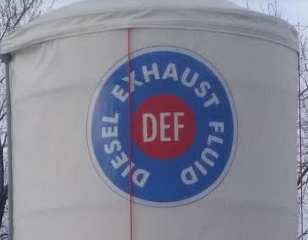Customers often ask about adding a logo to their tarp. There are several ways to achieve this which we will discuss in this post. Here is a summary of the various methods:
The method that is best depends on a number of factors as described below.
Complex logos need to be printed using "supersized" digital media printers on special print-friendly materials. The resulting logo can then be welded with our regular tarp material to construct the finished tarp. We don't do the digital printing ourself but rather work with a local digital printer for this. There are a number of downsides to having a logo printed on your tarp. Here are some things to consider:
The benefits of going with digital printing include:
Screen printing, also known as silkscreen printing involves creating stencils, known as screens, and using these to transfer ink onto the tarp surface. Screen printing offers a higher level of vibrancy than digital printing because the ink is about 10x thicker. Since each colour requires a different screen and ink application this technique is not really feasible when more than two or three colours are required. Here are some of the advantages of screen printing:
The downsides to screen printing include:
At Heavy Duty Tarps, we don't do digital printing or screen printing in house but we can do simple ink printing. This mostly involves printing block letters on tarps, for example, to guard against theft of the tarp or to advertise your company name on your tarp(s). So, if you don't want a fancy logo on your tarp but you do want to include your company name or slogan, this might be the way to go. We charge $2.50 per letter for this option.
A final option is to combine traditional banners with a standard tarp. With this approach you would purchase your banner or logo from a sign printing company. Most cities have budget printers who offer inexpensive banners and signs printed on vinyl. So one option is to simply hang these banners on your Heavy Duty Tarp as shown here on a mesh tarp.  The benefit of this option is that the tarp does not have to be made from special printable material so there will be no delays in the production process. Also, when the banners wear out or tear, you can just replace the banner; there is no need to replace the tarp. This will also be a very cost effective approach when compared to the alternative options.
The benefit of this option is that the tarp does not have to be made from special printable material so there will be no delays in the production process. Also, when the banners wear out or tear, you can just replace the banner; there is no need to replace the tarp. This will also be a very cost effective approach when compared to the alternative options.
This approach works well when you want to show large images.
Sometimes customers just want to add a small logo to their tarps, in this case, another good option is to again have the logos printed on vinyl banner material but instead of hanging the logo on the tarp you can actually cut out the logo and glue it to the tarp. Contact cement can be used for this or if you want a very strong permanent adhesive we recommend a product called HH-66 which works very well when bonding vinyl onto vinyl.  Here is an example of a logo that has been glued onto a vinyl tarp.
Here is an example of a logo that has been glued onto a vinyl tarp.
In summary, there are lots of different options when it comes to adding logos or lettering to your tarps. Generally, the most cost effective and least time consuming methods will involve